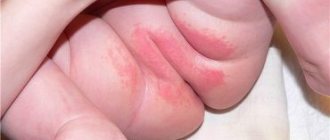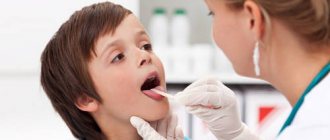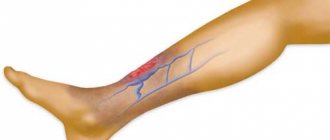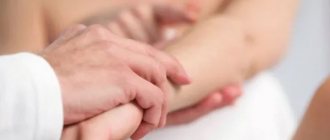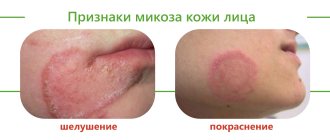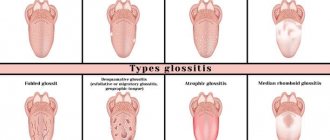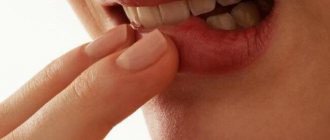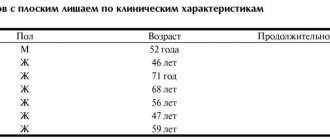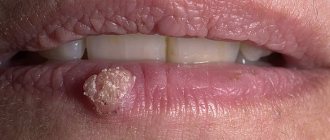The child’s parents must take proper care of their baby and begin proper treatment at the first manifestations of various diseases. The most common diseases that affect the skin occur in childhood, since the child’s immunity is not able to cope with many external irritants.
Among all skin diseases, the most prominent is viral pemphigus in children, which occurs at an early age and can become chronic. Most often, this type of viral skin lesion occurs in children under 10 years of age, and can manifest itself with a large number of symptoms.
This type of epidermal damage is transmitted through the air, most often in winter. If treated promptly, the viral disease is mild, but at an advanced stage it can cover the entire body and cause other unpleasant diseases.
What is pemphigus and the causes of the disease in children?
The disease viral pemphigus is a viral infection of the body, as a result of which blisters appear on the skin, which can be either small in size or, together with other formations, cover most of the body.
Viral pemphigus also tends to appear on the mucous membranes; the formation contains a cloudy liquid inside.
A child can become infected in public places, after which he can remain a carrier of the virus for some time and infect others.
The disease can occur for the following reasons:
- Weakened immunity;
- Use of medications;
- Congenital pathology;
- Hormonal imbalances;
- Incorrect personal hygiene of the child;
- Poor nutrition, which does not provide the body with all the necessary vitamins;
- Metabolism problems;
- Diseases of the nervous system.
The disease is caused by the Coxsackie virus, which has the property of quickly infecting the body and causing unpleasant symptoms similar to a cold.
Routes of transmission
This type of viral disease can be contracted in almost any public place.
The most common methods of infection with viral pemphigus are:
- Airborne droplets - most often when visiting public places such as kindergartens and schools;
- Through contact with household items that have previously been touched by an infected person.
Thus, it should be noted that short-term contact of a healthy child with an infected person can cause infection with viral pemphigus.
Children especially often become infected with viral pemphigus in the absence of necessary food processing and failure to wash their hands after visiting the street.
Symptoms of viral pemphigus in children
The disease in children most often manifests itself with the following symptoms:
- Formation of specific blisters on the epidermis that contain liquid;
- Cough;
- Redness of the throat;
- Formation of wounds and blisters on the mucous membranes;
- Runny nose;
- Weakness;
- Lack of appetite;
- The child becomes passive and constantly sleeps;
- Sharp weight loss;
- High body temperature.
Most often, the first affected areas in the form of blisters form on the mucous membranes of children. However, blisters may occur on the arms, legs, face, and body.
At a complex stage of development of viral pemphigus in children, blisters and serous fluid may appear on the palms of the hands.
Types and symptoms of pemphigus
Today, there are four types of pemphigus: common, foliate, vegetative and seborrheic (erythematous) . All of these forms of pemphigus, except foliaceus, affect the oral mucosa . The most common infection today is pemphigus vulgaris. This form of pemphigus in most cases manifests itself as rashes on the oral mucosa. And even if the first symptom of the disease is skin damage, then a little later rashes still appear on the oral mucosa. The blisters later open, and in their places appear red or covered with a white coating of erosion , which surrounds fragments of epithelium , which are the remnants of the skin of the blister. The general condition of the patients is gradually deteriorating, patients complain of weakness, their body temperature rises. Later, epithelization of erosions , problems with eating appear, cachexia , and if the patient does not receive proper treatment, then after a certain time (from six months to two years) death may occur.
At the initial stages, the development of pemphigus vegetans is approximately the same as with ordinary pemphigus. First, the mucous membrane in the mouth is affected. Typically, most blisters are found around natural openings in the folds of the skin. Thus, blisters can appear in the folds of the groin, in the armpit folds, under the mammary glands and in the area around the navel. , papillomatous growths appear on the surface of the resulting erosions . They are covered with a grayish coating.
With pemphigus foliaceus, special blisters appear on the surface of the skin - flaccid, with thin covers, flat. Then the tire quickly breaks, revealing erosions. Also, the tire can dry out with the skin and form thin crusty scales that look like plates. They grow on each other and this phenomenon spreads over the skin in a short time. Pemphigus continues as erythroderma with large-lamellar desquamation. In this form of the disease, the mucous membranes are generally not affected. This illness can last for several years.
The first symptoms of seborrheic pemphigus are lesions on which there are yellow scales or brown crusts. They are fairly easy to remove and have small white spikes on the surface below. Such lesions appear on the face, sometimes on the hairy part of the head. If the crusts are removed, wet erosions remain on the surface. Later, blisters begin to appear on the back and chest, and less often on the arms and legs. The bubbles pass quickly, leaving brown crusts in their place. In this case, the patient may not even notice the appearance of blisters: the formation of crusts occurs very quickly. The symptoms are similar to the process of seborrheic eczema . The disease can last a very long time, its course is usually benign.
Forms of viral pemphigus
There are certain forms of development of viral pemphigus in children, which can be accompanied by various symptoms and require compliance with certain features during treatment.
Pemphigus vulgaris
This form of viral pemphigus most often manifests itself as blisters, which, if damaged, can form ulcers.
It is observed in children in the following locations, such as the arms (especially the armpit area), abdomen, mucous membranes, face, thighs.
This form of viral pemphigus has the following features:
- The blisters are large in size and can, when combined, occupy large areas of the epidermis;
- The blisters quickly become damaged and form wounds, which gradually turn into crusts and cause a feeling of itching;
- Very often, wounds do not heal well and can become inflamed. As a result, swelling of the skin appears and ichor is released;
- Affects the oral cavity, as a result of which the child cannot eat food normally;
- When pressing on the blister, severe pain and burning may occur.
When this form of the disease occurs in children, the following unpleasant symptoms are observed:
- The appearance of blisters;
- Itching, resulting in the formation of sores;
- Feeling thirsty;
- Increased body temperature;
- The formation may have a specific odor;
- Cough;
- Runny nose;
- A sore throat.
The lack of timely treatment for this form of viral pemphigus can lead to the fact that most of the body is covered with a crust that constantly bleeds and itches. As a result, an infection is introduced into the damage and an inflammatory process is formed.
Seborrheic pemphigus
One of the severe forms of viral pemphigus, which is most often localized in the scalp of the body in children and is accompanied by a large number of symptoms.
Seborrheic viral pemphigus has the following features:
- Appears in the form of bubbles in the area of hair growth;
- Has the ability to quickly spread throughout the body;
- The blisters quickly become damaged and form crusts, which most often bleed;
- The wounds that exist under the crust can secrete clear liquid for a long time and bother the child.
Symptoms of seborrheic viral pemphigus are as follows:
- Increased body temperature;
- Itching in the area of hair growth;
- Increased sweating;
- Lack of appetite;
- Restlessness;
- Cough.
This form of pemphigus is difficult to treat in children, since it is difficult to treat the bubbles in the area of hair growth without damaging the blister itself. As a result, children experience itching and scratching of blisters.
Pemphigus foliaceus
Refers to a form of viral pemphigus that occurs in rare cases. Appear as a large number of small blisters, which quickly become damaged and form a continuous wound. Most often it forms on the face and abdomen in children.
The leaf-shaped form of viral pemphigus has the following features:
- It can form in almost any area of the body;
- It spreads only to the layers of the epidermis, while the mucous membranes do not become infected;
- Most often transmitted through touch and poor hand hygiene;
- The scabs that cover the wound may peel and crack, resulting in bleeding;
- Only the upper layers of the epidermis are damaged.
Viral pemphigus foliaceus manifests itself with the following symptoms:
- The appearance of small bubbles;
- Increased body temperature in children;
- Formation of a wound at the site of a blister;
- Dry and flaky skin in children;
- The presence of a specific odor.
With this type of viral pemphigus, a purulent discharge from the wound is very often observed, and painful sensations may form when touching the damaged area.
Pemphigus vegetans
This type of viral pemphigus can manifest itself as normal, gradually turning into another form. Most often it begins to manifest itself in the oral cavity and gradually moves to other parts of the body.
This form has the following features:
- Very often the places of formation are the armpits, groin area and behind the ears;
- After damage to the bladder, purulent erosion appears, which has a specific odor;
- The blisters tend to merge into one focus and form a wound with purulent discharge;
- This form of viral pemphigus can last for a long time, periodically disappearing and appearing again.
Pemphigus vegetans has the following symptoms:
- The appearance of itching in children;
- A sharp increase and decrease in body temperature;
- Headache;
- Lack of appetite;
- The largest number of blisters appears in the folds of the skin;
- Lesions most often appear in a specific location and slowly spread to healthy areas.
Very often, this form of viral pemphigus can transform into another, while the symptoms of the disease do not disappear, but only accumulate.
Enteroviral pemphigus
Many experts do not distinguish this form as a separate one, since enteroviral pemphigus combines the features and symptoms of all forms of the disease. Appears most often in children under 10 years of age.
Has the following features:
- The palms and feet of children are affected;
- Affects the oral cavity and can form in almost any part of the body;
- The bubbles form an elongated shape and can be of different sizes;
- When touching the bubbles, pain appears;
- An inflamed red line may appear around the blisters;
- If the bladder is damaged, purulent discharge from the wound may appear.
The following symptoms should be highlighted in children:
- Feeling overwhelmed;
- Fever;
- Itching and burning;
- Lack of appetite;
- Headache;
- Sleep disturbance;
- Lethargy;
- Cough.
The enteroviral form of viral pemphigus is a complex type of disease and requires correct diagnosis of the disease. It is almost impossible to independently determine the disease, which very often leads to complications.
There is another form of pemphigus, the Brazilian one, but this form does not appear on the European continent and often occurs in a mild form that does not require treatment.
Pemphigus true (acantholytic)
Most often, the oral mucosa is affected by ordinary (vulgar) pemphigus (in 75% of patients), so it is of greatest interest to dentists. Pemphigus vulgaris almost always begins with damage to the mucous membrane of the mouth or larynx, and then spreads to the skin. Even if the disease begins with skin lesions, lesions of the oral mucosa are almost always detected later.
Damage to the mucous membrane of the mouth and lips with pemphigus is characterized by the formation of single blisters with serous or hemorrhagic contents, having a very thin covering. Due to constant maceration in the oral cavity, the blisters open very quickly, so they are rarely seen. Along the periphery of the erosion, fragments of bubble tires are often found. In place of the blisters, painful erosions of a round, oval or elongated crack-like shape are formed, which do not heal for a long time. Erosions of bright red color are located against the background of unchanged or slightly inflamed mucous membrane. Their sizes in pemphigus vary - from a small abrasion to large surfaces of congestive red color. As a rule, there is no plaque on the surface of erosions, or there may be a thin layer of easily removable fibrinous plaque. Sometimes, instead of bubbles, white (greasy) films are formed, after which, when rejected, an erosive surface is exposed. With the progressive course of the disease due to the appearance of new blisters and pronounced acantholysis, the number of erosions and their size increase. When erosions merge, extensive lesions are formed, covering almost the entire mucous membrane of the mouth. Hypersalivation is possible. Most often, erosions are localized on the mucous membrane of the cheeks (especially in the retromolar region), the lower surface of the tongue, palate and the floor of the mouth. Sometimes lesions occur on the mucous membrane of the alveolar processes, transitional fold, lower and upper lips. In these cases, erosions epithelialize very slowly, even while taking large doses of corticosteroids.
In the absence of treatment, new erosions appear, which, merging with each other, form extensive erosive surfaces without a tendency to heal. The pain is quite severe, most intense when eating and talking. Erosions quickly become infected, especially in an unsanitized oral cavity. The addition of coccal, fungal flora and fusospirochetosis aggravates the patient’s condition, causing a specific foul odor from the mouth. Salivation intensifies. Saliva macerates the corners of the mouth, painful cracks appear. On the red border of the lips, in the corners of the mouth, blisters and erosions covered with hemorrhagic crusts are also possible. Sometimes hoarseness occurs, indicating damage to the larynx.
On the skin, blisters form mainly in places of friction with clothing (stomach, back, groin folds, etc.). After opening the blisters, very painful erosions remain on the skin. Any touch of clothing, linen or bandages to them causes sharp pain and forces the patient to remain motionless for hours.
Nikolsky's symptom in pemphigus is usually positive. There are three varieties of it:
- if you grab the lid of the bladder or the upper layer of the epithelium at the edge of the erosion with tweezers and pull, then 37 Zak. 5491. Yu. M. Maksimovsky describes the detachment of the epithelial film on the apparently unchanged healthy mucous membrane and skin. The thin film of epithelium is very fragile and is easily cut with tweezers;
- rubbing the unchanged mucous membrane or skin between the affected areas leads to the rapid formation of blisters or erosions;
- if you rub areas located far from the affected area, the upper layers of the epithelium there will also peel off. The second and especially the third types of Nikolsky’s symptom indicate an increase in the intensity of acantholysis.
With pemphigus, in addition to the skin and mucous membrane of the mouth, other mucous membranes (intestines, stomach, esophagus, pharynx), as well as internal organs and the central nervous system can be affected.
Pemphigus is characterized by an undulating course, periods of exacerbation are followed by periods of remission, which rarely occur spontaneously, usually after treatment. In the absence of timely and necessary treatment, the disease progresses steadily. Rapid generalization of rashes on the skin and oral mucosa is possible, the general condition of patients worsens, weakness, malaise, loss of appetite, fever up to 38-39 ° C, and diarrhea appear; swelling of the lower extremities. The addition of a secondary infection is accompanied by cachexia and intoxication. Without treatment, the process ends in death several months after the onset of the disease.
However, due to the widespread use of corticosteroids, such cases are now rare. Corticosteroid therapy interrupts the progressive course of pemphigus, and a stage of remission occurs.
Dühring's dermatitis herpetiformis is characterized by a subepithelial arrangement of blisters. The blisters are small, tense, located on a swollen, hyperemic background, tend to merge, their formation is accompanied by burning and itching. Unlike pemphigus, rashes with Dühring's dermatitis are very rarely localized on the mucous membranes. Nikolsky's sign is negative, acantholytic cells are absent. The blisters contain a significant content of eosinophils, and there is also eosinophilia in the blood. In patients with Dühring's dermatitis herpetiformis, sensitivity to iodine is often increased.
In some cases, with pemphigoid, lichen planus and other blistering diseases with a subepithelial location of the blisters, around them or erosions, the upper layer of the adjacent epithelium can quite easily peel off. At the same time, the bladder cover is thick and difficult to rupture. This symptom is called the false Nikolsky symptom, or the symptom of perifocal subepithelial detachment.
Benign non-acantholytic pemphigus of the oral mucosa differs from ordinary pemphigus by the localization of blisters only on the oral mucosa, subepithelial location, dense covering of blisters, often with hemorrhagic contents, and the absence of acantholytic cells.
Pemphigus in newborns
The manifestation of viral pemphigus in newborns occurs as a result of reduced immunity and damage to the body by the staphylococcal virus.
Viral pemphigus most often forms after the 20th day of a newborn’s life, since in the first days maternal immunity is still active, which reduces the risk of infection with pemphigus.
Causes of pemphigus in newborns:
- Weak immunity;
- Insufficient maternal hygiene;
- Infection during childbirth;
- Premature birth;
- Damage to the baby's skin.
Viral pemphigus disease is manifested by the following symptoms:
- Skin rashes;
- Peeling of the skin;
- Swelling;
- Inflammation of the umbilical cord;
- Wounds in places where a blister with liquid is damaged;
- Lack of appetite;
- Lethargy;
- Increased body temperature.
There are several stages of development of viral pemphigus in newborns:
- Erythematous stage - red spots appear on the skin with the release of colorless liquid;
- Exfoliative stage - manifested by the appearance of blisters in the arms, thighs and abdomen. It tends to pass quickly and does not require long-term treatment;
- Regenerative stage - blisters form on the newborn’s skin, which quickly become damaged and form small erosions.
Staphylococcal pemphigus is also isolated, which is formed as a result of the staphylococcus virus, which affects the skin.
Viral pemphigus in newborns is transmitted by airborne droplets and appears in children only through contact with an infected person.
Pemphigus of the mouth and extremities: Topic overview
What is viral pemphigus of the mouth and extremities in children?
Viral pemphigus of the mouth and extremities in children is a common childhood disease. The disease causes swelling in the mouth, hands, feet, and sometimes on the buttocks and legs. A swelling in the mouth can cause a lot of pain and may make it difficult for your child to eat. This is not a dangerous condition and all symptoms usually go away after a week or so.
The disease occurs at any time of the year, but most often viral pemphigus of the mouth and extremities occurs in summer and autumn.
Viral pemphigus of the mouth and extremities has nothing in common with other diseases that have similar names: foot and mouth disease (sometimes this disease is also called thrush) or “ mad cow disease ”. These diseases occur almost exclusively in animals.
What causes viral pemphigus of the mouth and extremities in children?
Viral pemphigus of the mouth and extremities in children is a common childhood disease caused by a virus called enterovirus (intestinal virus).
The virus spreads easily through sneezing and coughing. You can also become infected by coming into contact with contaminated stool, such as when changing diapers. Very often, disease outbreaks occur within community boundaries. Most often, children spread the disease during the first few weeks of illness. But the virus persists in stool and can sometimes spread for several months after the blisters have subsided and the wounds have healed.
It usually takes 3 to 6 days after a person exposed to oral and extremity pemphigus virus develops symptoms. This is called the incubation period.
What are the symptoms?
At first, the child may feel tired, have a sore throat, and a fever. Then, after a day or two, the child may develop sores or blisters on the hands, feet, mouth, and sometimes on the thighs. In some cases, the child will develop a rash before the blisters appear. The blisters may burst and crust over. The wounds and blisters disappear in about a week.
How is viral pemphigus of the mouth and extremities diagnosed in children?
The doctor will be able to make a diagnosis of viral pemphigus of the mouth and extremities based on the manifestation of the symptoms described above and based on examination of the wounds and blisters.
How to treat this disease?
Viral pemphigus of the mouth and extremities in children does not require special treatment. In most cases, the disease goes away within 7-10 days. You can use the following tips to ease your child's symptoms:
- Encourage your child to drink plenty of cool drinks. You can also offer your child carbonated drinks and ice cream.
- Avoid giving your child sour or hot or spicy foods and drinks, such as salsa or orange juice. These foods can irritate the tissues in your mouth.
- To relieve pain or reduce fever, give your child acetaminophen (such as Tylenol) or ibuprofen (such as Advil). Do not give your child aspirin, as it has been linked to Reye's syndrome.
To prevent the disease from spreading:
- Encourage all family members to wash their hands frequently. It is very important to wash your hands after changing the diapers of a sick child. This happens because the virus can persist in stool for months on end after the blisters have gone away.
- Do not allow your child to share toys or kiss him while he is infected.
- If your child goes to school or daycare, talk to staff about when your child can return.
- Wear latex or rubber gloves when applying lotion, cream, or ointment to your child's blisters.
| foot and mouth disease Foot and mouth disease is a viral infection that occurs in animals, such as cattle, sheep, and pigs (even-toed ungulates). This disease is in no way related to viral pemphigus of the mouth and extremities, which occurs in humans - the two diseases are caused by completely different viruses. The foot-and-mouth disease virus can spread from animal to animal through direct contact with an infected animal or through contact with food or other objects that have been contaminated. Animal caregivers can spread the disease from one animal to another through contaminated clothing, shoes, or other contaminated items. Mad cow disease Mad cow disease (bovine spongiform encephalopathy, BSE) is a degenerative and usually fatal disease that affects the central nervous system of cattle, sheep, and goats. People cannot get mad cow disease, but in very rare cases they get a form of the disease called Creutzfeldt-Jakob disease if they eat nerve tissue (brain or spinal cord) from cattle infected with mad cow disease. No one knows for sure what causes mad cow disease. According to one theory, the disease is caused by a change in the shape of certain proteins that are found in animal cells. Similar changes can be caused by other abnormal proteins called prions. In infected cows, abnormal proteins (prions) are found in the brain, spinal cord, and small intestine. Another theory is that mad cow disease is caused by a virus that causes proteins to change to abnormal levels (prions). Enterovirus Enteroviruses, such as Coxsackievirus and ECHO viruses, live in the intestines of people and other animals. Enteroviruses usually do not cause disease, but under certain conditions they can. Infected people pass viruses from each other through contaminated food, water, or other objects. |
Complications
If viral pemphigus is not treated correctly, the following types of complications may occur:
- Formation of a chronic form of the disease;
- Infection of wounds with discharge of pus;
- Malfunctions of internal organs;
- Meningitis;
- Development of pneumonia;
- Major weight loss;
- Possibility of spots and scars after treatment of the disease.
Pemphigus can cover a child's entire body and cause other types of skin diseases that make the viral infection worse.
Causes of occurrence and development
The pathology begins its development after the development of autoimmune antibodies aggressive to desmoglein proteins. These proteins act as an adhesive base used to connect skin cells. In the process of protein destruction, the skin is destroyed. At this point, bacteria from the environment begin to penetrate the skin layers, causing the formation of blisters.
The factors that trigger the pathological process still remain unclear. Some of them are established by science:
- genetic predisposition to autoimmune processes;
- malfunctions of the central nervous system;
- the presence of viruses, infections or other pathogens in the body - a connection has been identified between infection with endogenous bacteria and the appearance of an autoimmune reaction.
Russian official medicine identifies the following reasons causing an inadequate immune response:
- taking medications of the thiol group - strong antibiotics, immunomodulators and others;
- burns;
- herpes virus types 1, 2 and 8;
- tactile contact with pesticides;
- severe stress or nervous overload.
It is almost impossible to establish the true cause of the disease. In fact, in laboratory conditions only the presence of aggressive antibodies is determined.
Diagnostics
When the first symptoms of the disease appear, you must contact a specialist to undergo the necessary diagnostics.
Diagnostics is carried out using the following methods:
- Visual examination of the patient;
- Blood analysis;
- Study of the component of the bubble;
- Histological analyses;
- Stool analysis.
If a specialist observes the addition of additional types of infection to viral pemphigus, then additional tests may be prescribed.
Diagnosis of pemphigus
To make a diagnosis of pemphigus, it is necessary to study the clinical picture. The specialist is also guided by the presence of a positive Nikolsky symptom , which causes acantholysis . This phenomenon suggests that when the remnants of the bladder cover are pulled, the erosion becomes more voluminous due to the process of perifocal detachment of epidermal cells . The diagnosis also confirms the presence of acantholytic cells, which, due to acantholysis, have lost communication with each other. These cells are found in fingerprint smears taken from the surface of fresh erosions. The acantholytic cell has a large nucleus that occupies almost the entire cell, and it is also characterized by heterogeneous staining of the cytoplasm .
If the disease is severe, then a positive Nikolsky symptom is detected even during the examination of skin without lesions. To do this, simply rub the skin with your fingers. Near the blisters and even far from them, the upper layers of the skin peel off and erosion appears. When pressing on the bladder, perifocal epithelial detachment .
a histological examination is carried out in a dermatological hospital or in a dermatovenerological dispensary . For this, a special immunofluorescence reaction is used to detect antibodies that belong to class G immunoglobulins. When diagnosing pemphigus, it is important to differentiate it from Gougerot-Hailey disease , that is, benign seminal pemphigus. With this diagnosis, acantholysis is mild, and Nikolsky's symptom is negative.
Drug treatment of pemphigus in children
Treatment of this type of disease is most often carried out in several ways, depending on the cause of its occurrence.
There are several methods of treating viral pemphigus in children.
General therapy is necessary to eliminate the virus from the body and strengthen the immune system's resistance to other types of infections.
The most commonly prescribed drugs are:
- Antiviral agents - for example, Viferon rectal suppositories - are recommended to be used twice a day. The course of treatment is no more than 10 days. Allowed for use from 1 month of age. Average price 240 rubles ;
- Glucocorticosteroids are used individually for each child. The most commonly used is Dexamethasone, once a day before meals, for a course of no more than 3 days. Average price 150 rubles ;
- Cytostatics are necessary to block further spread of the disease. The most commonly prescribed drug is Sandimmune, used twice a day before meals for 5 days. Permitted age is over 6 years. Average cost 1300 rubles ;
- Antipyretics – Nurofen, used only if necessary depending on the child’s weight. Allowed to be used in the form of syrup from 3 months. Cost from 120 rubles .
Viferon Dexamethasone Sandimmune Nurofen
Local treatment is used to treat blisters, the most commonly used are:
- Antiseptics – Chlorhexidine, recommended for use on wounds twice a day for 5 days, allowed for use in children over 7 years of age. Average price 80 rubles , avoid contact of the drug with soap. An allergic reaction may occur. And also Miramistin, which can be used from a month of life, diluted with water in a 1:1 ratio. Cost from 240 rubles ;
- Combined antiseptic drugs - special talkers are used, which are made according to an individual prescription from the attending physician, depending on the complexity of the disease. On average, the cost of such talkers depends on the price of the components and can vary from 150 to 300 rubles :
- Antimicrobial drugs for the oral cavity - Orasept is used twice a day for 5 days. Can be used from the age of 3 years. The average price of the drug is 300 rubles . For children under 12 years of age, oral cavity treatment is performed by adults to prevent cases of overdose.
Chlorhexidine Miramistin Orasept
Physiotherapy - prescribed by the attending physician individually for each patient.
Provides for the following procedures:
- Electrophoresis;
- Electrical stimulation of the bladder;
- Magnetotherapy.
All types of physiotherapy methods are used for children older than one month, strictly under the supervision of the attending physician.
Treatment with folk remedies
Folk remedies for the treatment of viral pemphigus are used at the beginning of the formation of diseases. And they help to quickly reduce unpleasant symptoms and improve the child’s condition.
However, all methods may have hidden side effects, so you should consult your doctor before use.
The most commonly used methods are:
- Nettle juice – helps reduce inflammation and has an antiseptic effect. It is necessary to chop the leaves and stems of fresh nettle and add a glass of water, let it brew for an hour. Strain, moisten cotton wool in the treated liquid and apply to the locations of the bubbles;
- Baths with a series - helps reduce discomfort and has the property of healing damage to the epidermis. To prepare, you need to pour two tablespoons of dry herbs with two glasses of boiling water and let it brew for 20 minutes. Add to water while bathing. Used from birth, in a course of two days;
- Mint and calendula flowers have the property of strengthening the immune system. To prepare, you need to mix a teaspoon of mint herb and a teaspoon of calendula flowers and pour a glass of boiling water. Give your child a tablespoon twice a day for 7 days. Recommended for use from the age of 3 years;
- Olive oil – has beneficial qualities for restoring the skin, it is recommended to use a cotton pad, apply a small amount to damaged areas and leave until completely absorbed. Allowed for use from the age of 6 months. Duration of treatment is 10 days.
Recommendations for caring for a sick child
If a child develops symptoms of the disease, it is necessary to call a doctor. Once a diagnosis is made, a certain type of care must be provided to the patient.
This care is as follows:
- The child is bathed once every few days, adding special herbal decoctions to the water;
- Eliminate fatty, salty, sour foods from the diet;
- It is necessary to change household items and personal towels daily;
- Home clothes should not be too tight and have a synthetic composition;
- Bed linen must be changed every three days;
- Every day, the room where there is a person suffering from viral pemphigus must be cleaned and ventilated;
- Isolate the patient from other family members for at least 7 days;
- Treat skin lesions in a timely manner;
- Make sure that no bubbles are scratched.
Proper parental care can much more quickly reduce the unpleasant symptoms of viral pemphigus in children and also prevent the development of complications.
Disease prevention
To prevent the development of viral pemphigus, it is recommended to follow simple prevention methods:
- Children at any age should have their own personal hygiene equipment. This is especially true for toothbrushes, washcloths and towels. The towel must be changed every two days. Before this, iron the item at high temperature;
- You should maintain proper nutrition and exclude harmful foods. The diet should contain all the necessary vitamins and minerals to improve immunity;
- The children's room must be kept clean;
- Clothing must be clean and changed daily;
- Avoid contact with infected people;
- Maintain proper hygiene, especially after visiting public places;
- Treat all emerging diseases in a timely manner, do not self-medicate.
Following these simple preventive measures can reduce the likelihood of contracting viral pemphigus. However, parents should be aware that no one is protected from the risk of becoming infected with pemphigus.
Viral exanthemas
Viral exanthemas are a number of diseases that are viral in nature and are one of the common causes of skin rashes in infants and older children.
Let's look at some of them.
Gianotti-Crosti syndrome
Papular acrodermatitis was first described in 1955 by Italian dermatologists F. Gianotti and A. Crosti. In the past, a distinction was made between true Gianotti-Crosti syndrome or papular acrodermatitis infantile (as a manifestation of hepatitis B virus infection) and papulovesicular syndrome with acral localization (on the distal parts of the extremities), accompanying other viral infections or occurring in their absence. It is now universally recognized, even in the famous Gianotti and Crosti Clinic in Milan, that there is no difference between the two forms. Thus, the concept of “Gianotti-Crosti syndrome” was introduced, which includes all papular and papulovesicular rashes provoked by a viral infection. Skin lesions usually have no subjective symptoms; sometimes itching may occur. Symptoms of a primary viral infection are infrequent and can obviously be very varied, including respiratory and gastrointestinal problems.
Patients usually feel well. There are rashes in the form of numerous red or red-brown nodules and nodules-vesicles on the cheeks, extensor surfaces of the distal parts of the limbs and on the buttocks. Sometimes the lesions are hemorrhagic; Sometimes the palms and soles are affected. The trunk is affected in exceptional cases.
Exanthema usually lasts from 2 to 4 weeks, but can sometimes persist for up to 8 weeks.
As a rule, no specific treatment is required. Symptomatic therapy may be prescribed.
Viral pemphigus
This is an infectious disease with a benign course. Its causative agent is the Coxsackie virus strain A16. However, sometimes other strains of this virus are pathogens. The prodromal period is characterized by low-grade body temperature and general weakness. Soon, blistering rashes appear on the mucous membrane of the mouth, soft palate, and uvula. In some cases, the rash is painful and prevents the patient from eating normally. Skin manifestations develop 1-2 days after the rash appears in the mouth. They are represented by round or oval nodular-bubble elements, which can transform into surface erosions. The usual localization of skin manifestations is the sole and palm. Sometimes the process involves the dorsum of the feet and hands. In addition, macular nodular elements occasionally appear on the buttocks. Skin manifestations persist for 7-10 days.
Viral pemphigus does not require special treatment.
Unilateral laterothoracic exanthema
This disease of unknown etiology begins with the development of skin lesions in areas adjacent to the joints. The most likely explanation for these manifestations is a primary viral disease, which is confirmed by seasonality and familial predisposition.
In addition, approximately 75% of patients have respiratory signs and symptoms that are either prodromal or accompany the rash.
This type of exanthema is most often seen in children around 2 years of age, with an age range of 6 months to 10 years.
In most cases, the clinically characteristic exanthema begins in the axillary or groin areas. It may spread beyond this region and become bilateral or disseminated. However, there is a tendency for the rash to be more severe on one side of the body. Individual lesions appear as reddish nodules, often with a pale rim around the periphery. The nodules may merge, and thin scales are sometimes observed. The face, mucous membranes of the oral cavity, palms and soles are not affected.
Approximately two thirds of patients have regional lymphadenopathy.
The rash may be accompanied by mild itching. Signs and symptoms associated with an underlying viral infection are usually mild, and fever is not common.
Treatment is usually not required. You just need to reassure your parents by telling them that the rash will disappear. An emollient cream or ointment without an active ingredient is recommended for severe itching.
The exanthema begins to resolve after about 3 weeks and usually disappears completely by the sixth week. In rare cases, it can persist for up to four months.
Dermatovenerologist Varlamova S.K.

